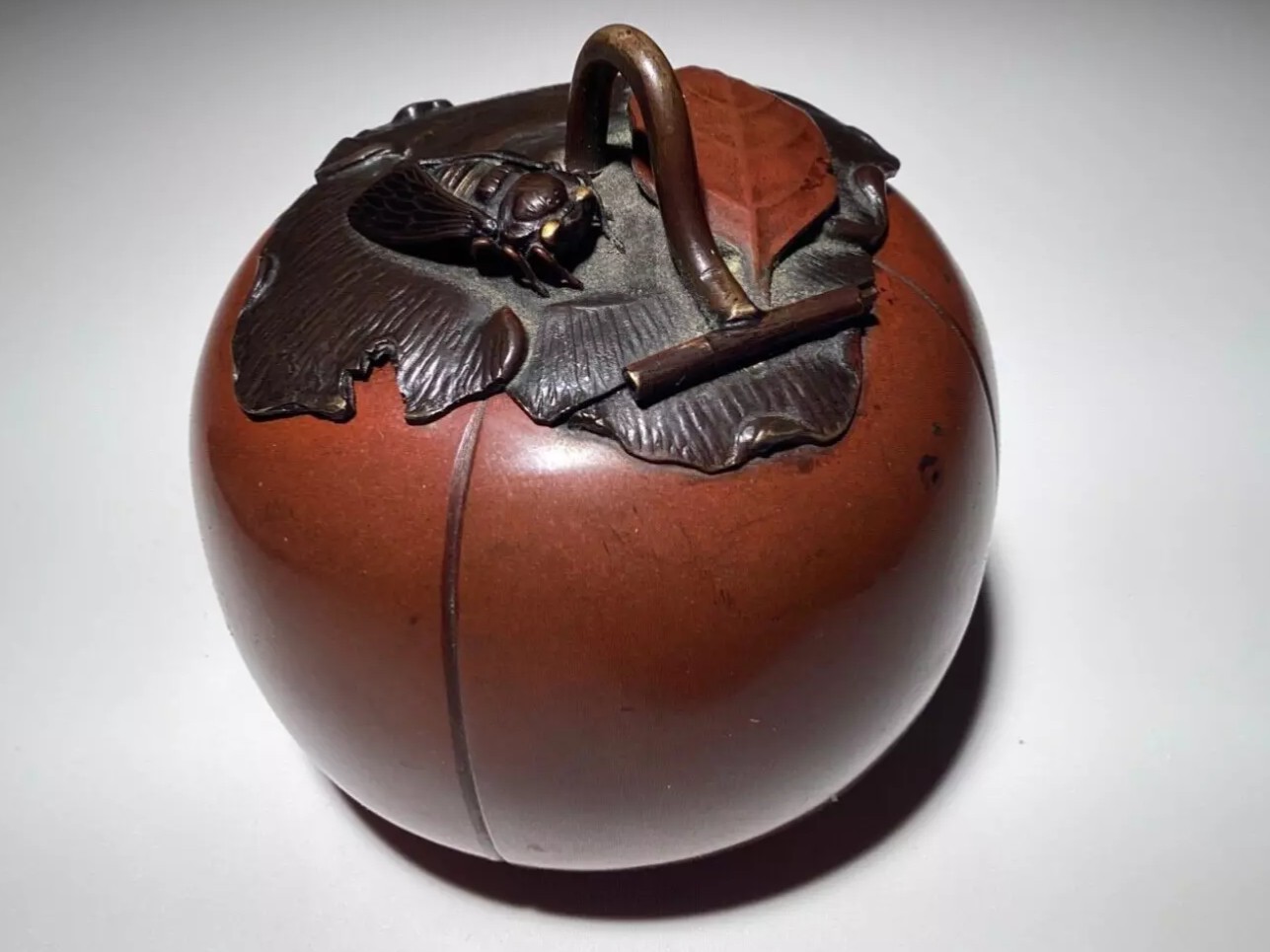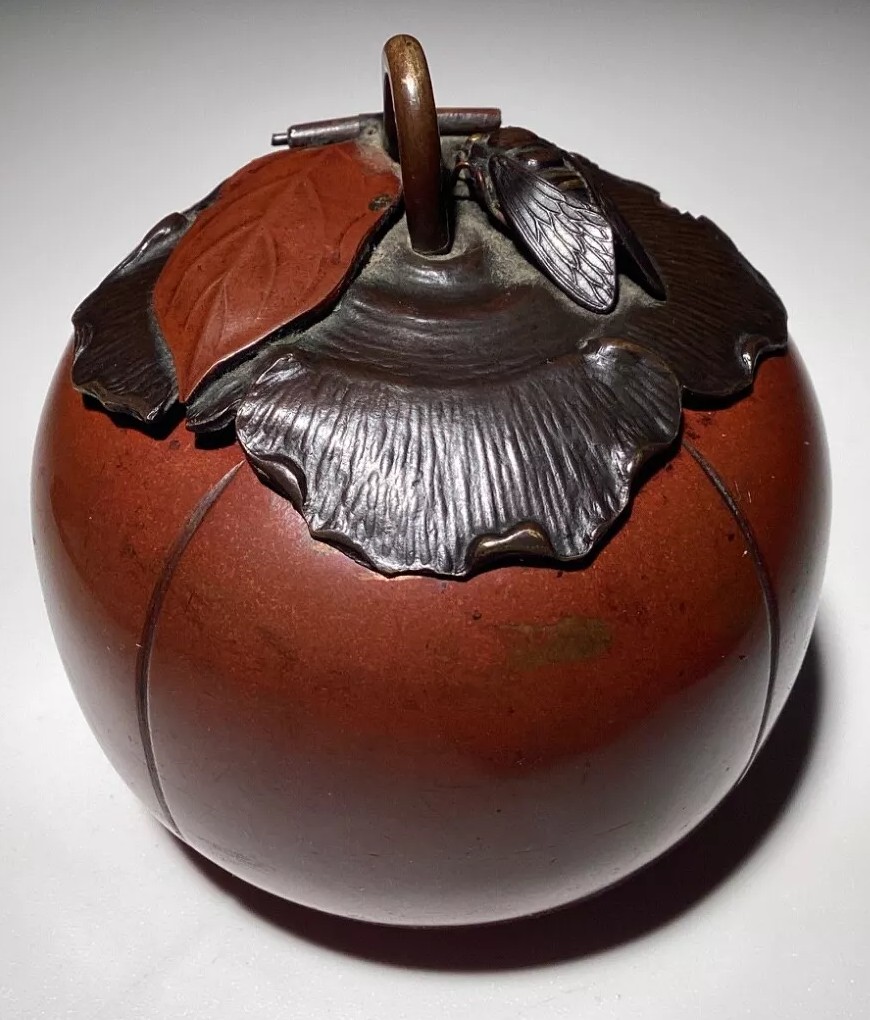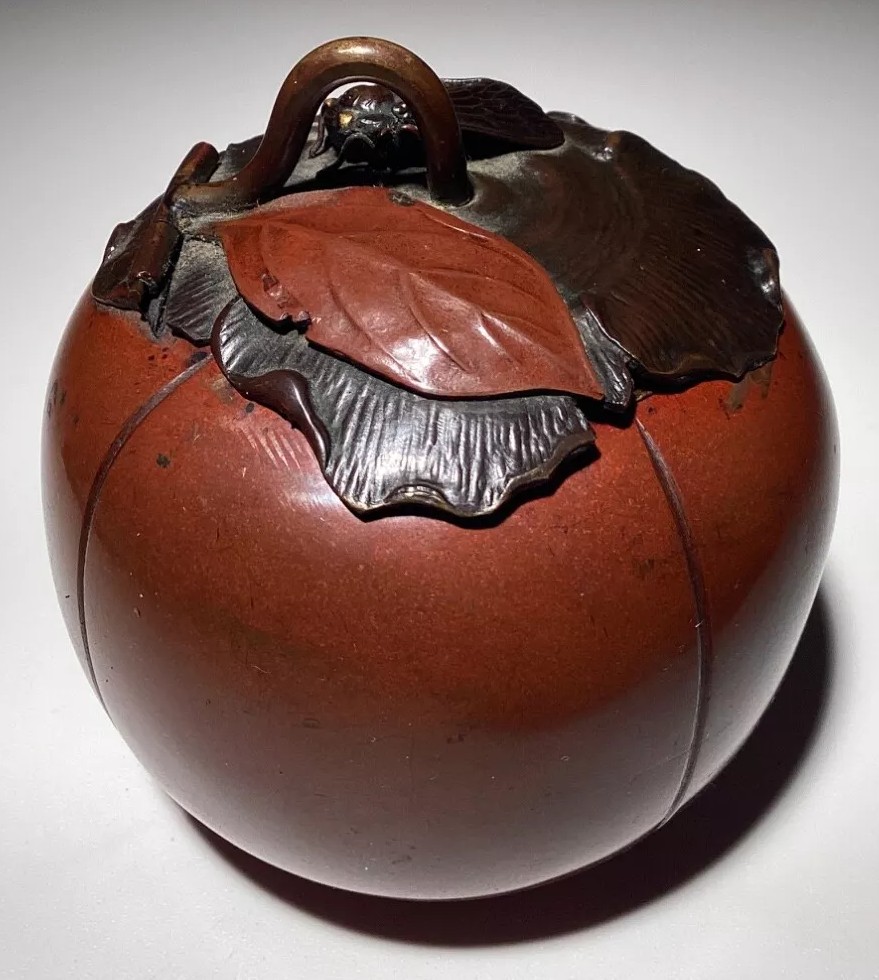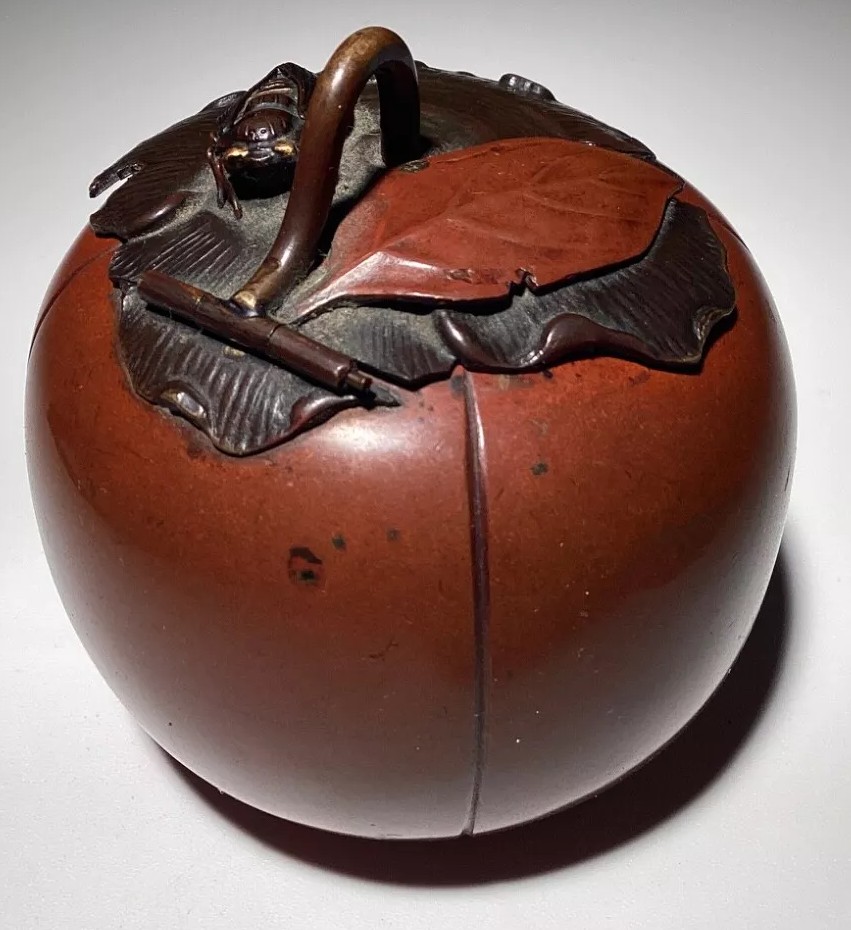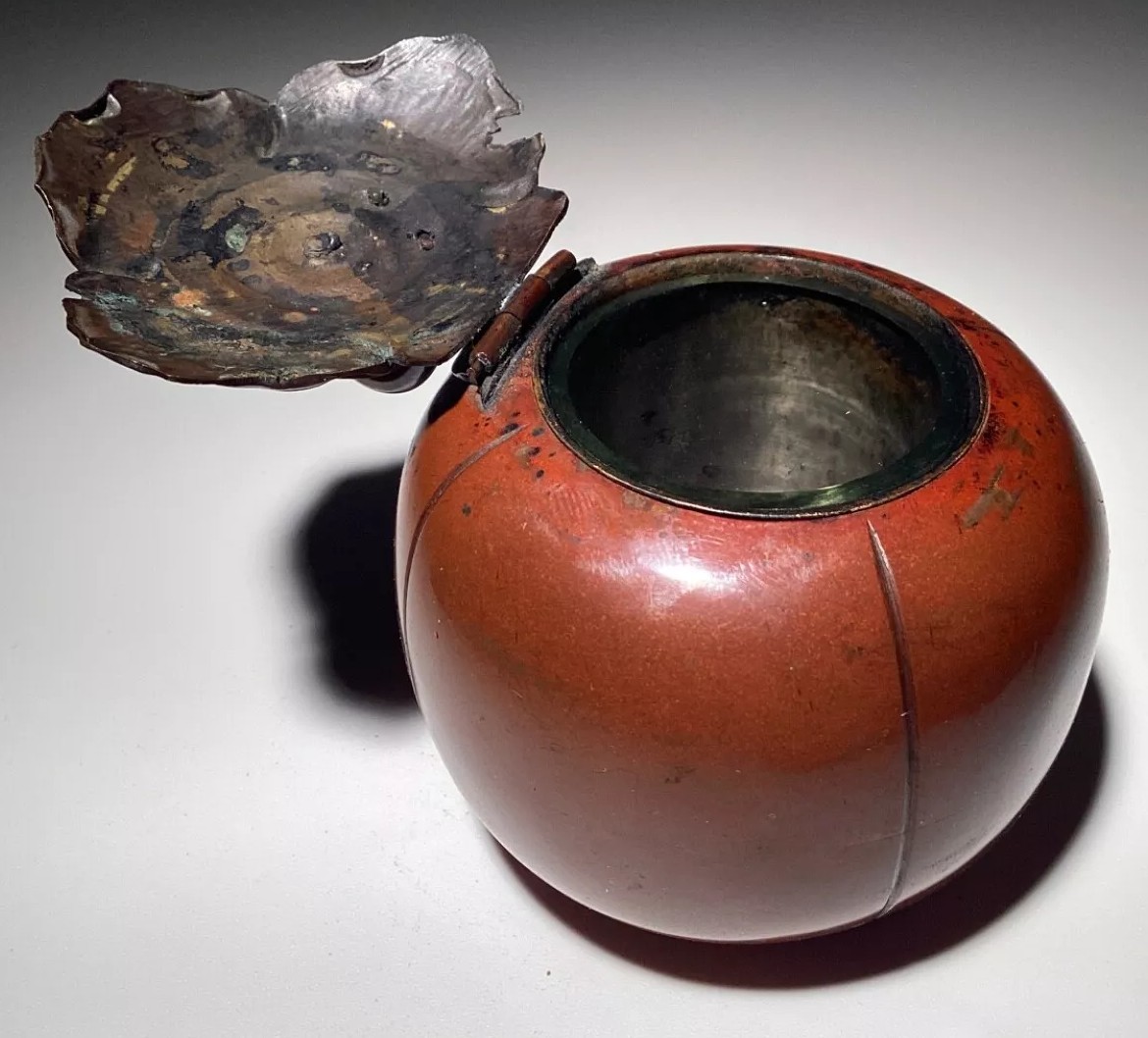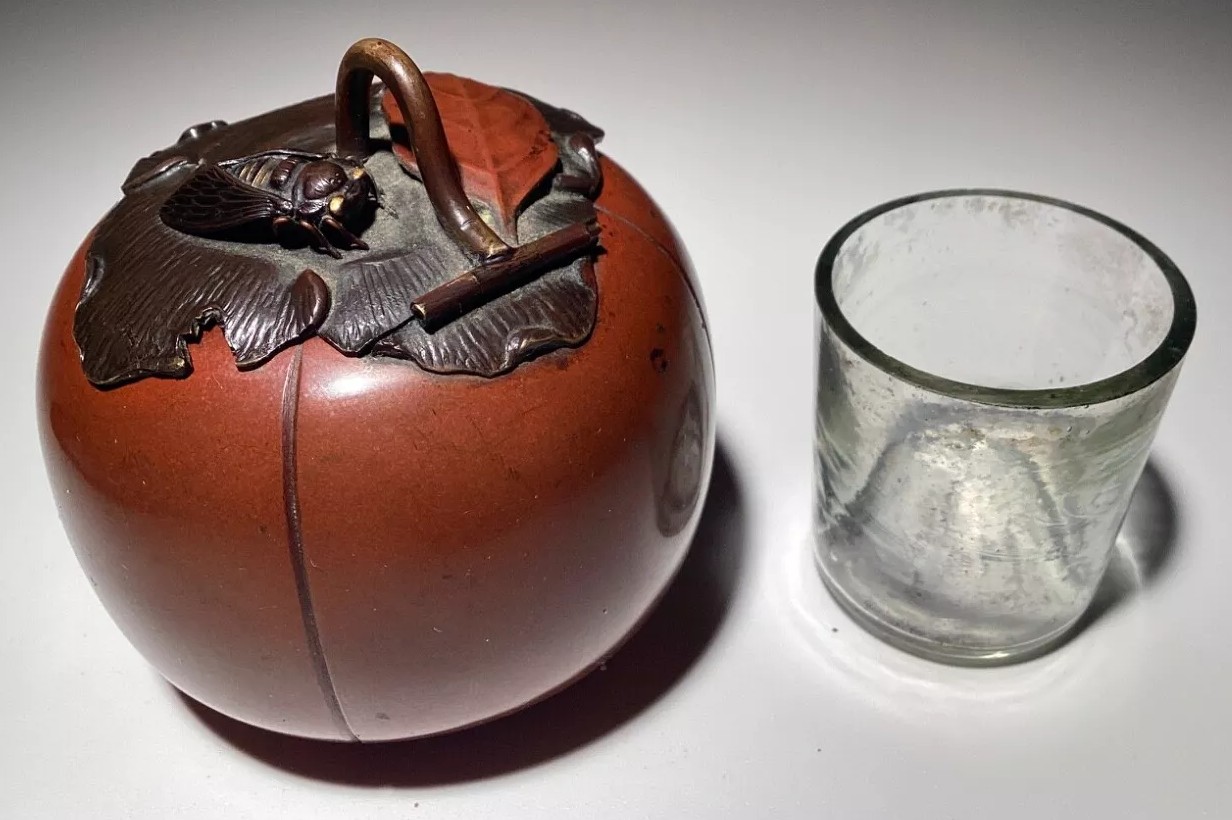
Inkipedia
Meiji Period Japanese Inkwell – Persimmon with Cicada
| Categories | Far East / Oriental, Figural - Inanimate |
| Type | Fruit |
| Material | Bronze, Metal |
| Markings | Unmarked |
| Manufacturer | Undetermined |
| Origin | Japan |
| Date or Era | circa 1900 |
| Measuring | 2 ¾” diameter |
This is a beautiful and detailed Japanese inkwell, showcasing the artistry and craftsmanship of the Meiji period.
Description:
- Form: The inkwell is crafted in the form of a ripe persimmon (kaki), a fruit that holds symbolic meaning in Japanese culture, associated with autumn and abundance The persimmon’s shape is realistically rendered, with subtle indentations and a smooth, rounded surface.
- Material: The primary material is patinated metal. The persimmon body displays a warm, reddish-brown patina, mimicking the color of a ripe fruit.
- Calyx and Stem: The top of the persimmon features a sculpted calyx (the sepals of the flower that remain after the fruit develops) and a curved stem. The calyx and stem are rendered in a darker, contrasting bronze.
- Cicada Decoration: The most striking feature is the meticulously sculpted cicada perched atop the calyx. The cicada is rendered with remarkable accuracy, capturing its characteristic form, segmented body, and delicate wings. The detail is exceptional, including the three ocelli (simple eyes) between the two large compound eyes. The cicada is often seen as a symbol of transformation and rebirth.
- Glass Insert: The inkwell retains its original glass insert.
The Meiji Period:
The Meiji period (明治時代, Meiji jidai) in Japanese history spanned from 1868 to 1912. It marked a transformative era in Japan’s history, characterized by:
- Modernization and Westernization: The Meiji Restoration led to the overthrow of the feudal Tokugawa shogunate and the restoration of imperial rule under Emperor Meiji. Japan embarked on a rapid program of modernization and Westernization, adopting Western technologies, political systems, and cultural practices.
- Industrialization: Japan experienced significant industrial growth during this period, leading to the development of new industries and the expansion of trade.
- Artistic Innovation: While embracing Western influences, Japanese artists and craftsmen also sought to preserve and adapt traditional techniques and aesthetics. This resulted in a unique blend of styles and a flourishing of artistic production.
- Artistic Excellence: The inkwell showcases the high level of skill and artistry among Japanese metalworkers during the Meiji period. The intricate cicada sculpture and the realistic persimmon form are testaments to their craftsmanship.
Sold for $610 in January 2025
Content disclaimer. The information posted is the owner’s best knowledge and may not have been vetted by the SOIC. We welcome comments, corrections, and additions, working to make our website information comprehensive and accurate.
Join the Society of Inkwell Collectors (SOIC) – it’s free!
Founded in 1981 as a non-profit organization,
we are documenting inkwells (and accessories).
We’re here to help and inform!
